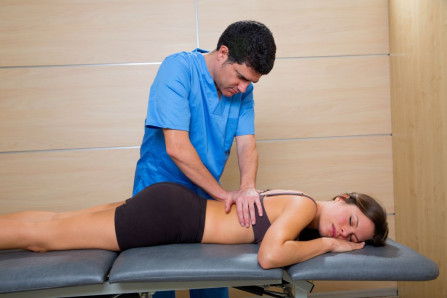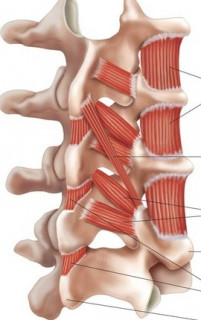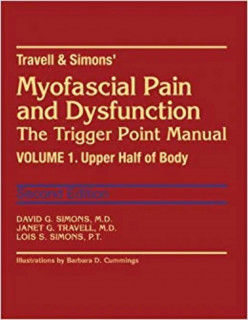Can (myofascial) trigger points cause shoulder pain
Yes (myofascial) trigger points are a very large cause of shoulder pain. They have been found to be extremely common in sufferers of... Read Article

The following muscles can cause back pain. They are all very important for your spine to function normally, and can all have trigger points that produce back pain.
If you have back pain it is important to check and if necessary treat all of these. We have an excellent guide that covers each of the muscles listed , with recommended massage and self therapy techniques. However, it is most important to note most professional therapists and self therapies miss the number one on this list and arguably the most important muscles. This is because they sit deep around your spine where they are impossible to feel and cannot be reached with most forms of massage. Because these are missed relief is too often incomplete and temporary.
In this guide we will specifically discuss these overlooked muscles including why:
The muscles
Why they are so important
Why massage therapists cannot examine or treat them
How to treat them (including self therapy)

This picture shows the muscles that are too deep and hard to get to for massage therapists to treat. They sit close to the spine and run between adjoining vertebrae. There are actually many different muscles named according to what part of the vertebrae they attach to and what they do, but we collectively call them the intrinsic muscles of the spine.
As you can see by where they are and where they attach the intrinsic muscle of your spine:
Massage therapists examine muscles by feeling them: looking for tightness, feeling ropy, and tender lumps. The intrinsic muscles of the spine are too deep, very short, and sit between levers that jut from the vertebrae. It is impossible for massage therapist to effectively feel them. Likewise they are too deep and hard to get at for conventional massage techniques to have any worthwhile effects.

The “bible” for massage therapists is the two volume trigger point manual. Each muscle has it’s own chapter with diagrams and a host of clinical and treatment information, only the intrinsic spinal muscles don’t have a chapter or are even listed in the index. Despite being so important they only get a couple of insignificant mentions.
The intrinsic muscles of your spine are too deep and hard to get at to examine directly, but properly trained professionals are able to examine them indirectly by examining their effect on joint movement. When the intrinsic muscles are tight (usually containing (myofascial) trigger points ) they restrict the movement of one vertebrae relative to another.
The intrinsic muscles are too deep and hard to get to with conventional massage pressure. Needles would not be an option because the bony levers would get in the road and there would be a very high risk of piercing nerve roots, blood vessels or the spinal cord. However, they can be easily reached using vibration massage. We will demonstrate how this is done in this short video.
We are continually adding more information on research and uses. Subscribe below to have us email them to you "hot off the press".

Several years ago Dr Graeme, a Chiropractor practicing in Victoria, Australia was looking for a serious hand held massager his patients could use at home to get the extra quality massage they needed. The ones he found in the shops and on-line for home use looked nice but were not serious, and... read more
Yes (myofascial) trigger points are a very large cause of shoulder pain. They have been found to be extremely common in sufferers of... Read Article
Massage guns are heavily marketed as a substitute for professional therapists, providing benefits such as sports recovery and pain... Read Article
If you have fibromyalgia it’s highly unlikely that medical specialists will ever fix you. They’re treating effects not causes. It’s the... Read Article
Tennis elbow is a painful condition where prolonged abnormal tension in your forearm muscles causes the site where they are attached to... Read Article
If you have back pain massage therapists and dry needlers will most likely miss the most important muscles. This is because they sit deep... Read Article
Massage and trigger point therapy are widely used to treat back pain. I this article we’ll discuss how these may help with your problem,... Read Article
Both stretching and foam rolling are commonly used to increase flexibility, prepare muscles for a workout, and to help recover... Read Article
Massage has been widely used by sports clubs and professional athletes, but more recently self massage options have made these more... Read Article
If you’ve got painful trigger points your usual options are needles, laser or some form of pressure technique where you have pressure... Read Article
There are a variety of systems of “pressure points” used for health benefits and to relieve pain. They all have their devoted advocates... Read Article
Trigger points are those tender lumps in muscles that therapists find. This article covers what they are, what they do, and how they are... Read Article
Do not refresh or leave this page until loading complete.